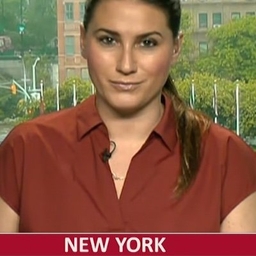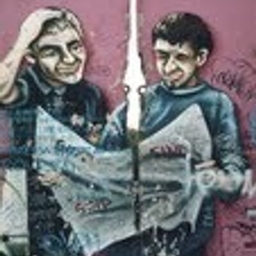
Kate Mothes
Independent Contemporary Art Curator and Writer at freelancer.com
Contributor at Colossal
Remote Consultant for The Bubbler at madisonpubliclibrary.org
Founder and Editor at dovetailmag.com
Articles
-
1 week ago |
islands.com | Kate Mothes
Home to a whopping 19 official American Viticultural Areas (distinct wine-grape-growing regions), Oregon isn't short of places to explore for rare varietals and edgy, innovative blends. Thanks to a cool maritime climate and long growing season, vineyards in the state's postcard-worthy Willamette Valley are renowned for grapes like pinot noir that thrive in more temperate regions. But the agricultural traditions don't end there. Lavender is another botanical that loves this kind of environment.
-
1 week ago |
thisiscolossal.com | Kate Mothes
For those of us who have regularly traveled through airports, the process of checking in—and checking bags—always seems undergirded by latent anxiety. What if a suitcase gets routed onto the wrong plane or never arrives? What if it falls open or gets searched? For filmmaker Lucy Davidson, it’s not so much about the luggage as it is about what we stuff inside.
-
1 week ago |
thisiscolossal.com | Kate Mothes
Capturing the magical glow of the golden hour, the rich blue of early evening, and the butter-yellow of morning, Seth Armstrong transports us to Southern California in his ongoing series of oil paintings. Bright bungalows, electrical lines, palm trees, and shrubs dot the foothills that shape Los Angeles, with the San Gabriel Mountains often rising in the background.
-
1 week ago |
thisiscolossal.com | Kate Mothes
Merging themes of interstellar travel and cultural convergences, Zak Ové creates large-scale sculptures and multimedia installations that explore African ancestry, traditions, and history. The British-Trinidadian artist’s practice is deeply rooted in the narratives of the African diaspora, focusing on traditions of masquerade. He delves into its role in performance and ceremony, as well as masks as potent instruments for self-emancipation and cultural resistance.
-
1 week ago |
thisiscolossal.com | Kate Mothes
Reveling in the interplay of light, material, and space, Lillian Blades creates expansive and immersive installations that reflect on how we experience pattern and texture. Through the Veil, now on view at Sarasota Art Museum, marks the artist’s first institutional solo exhibition, bringing together a sweeping array of the Atlanta-based artist’s large-scale works.
Journalists covering the same region

Asli Pelit
Women's Soccer Writer at The Athletic
Asli Pelit primarily covers news in various cities across the United States, including New Orleans, Louisiana; New York City, New York; Kansas City, Missouri; Los Angeles, California; Houston, Texas; and Miami, Florida.

Chelsea Bengier
Freelance Travel Writer and Editor at Freelance
Chelsea Bengier primarily covers news in various locations across North America, including areas in the United States and Canada.
Sophie Mancini
Managing Editor at PRIOR
Sophie Mancini primarily covers news in New York City, New York, United States and surrounding areas.

Jacquelin Carnegie
Journalist at Freelance
Jacquelin Carnegie primarily covers news in New York City, New York, United States and surrounding areas including parts of Florida and Europe.

Adrian Madlener
Writer at Freelance
Architecture and Real Estate Writer at Homes.com
Adrian Madlener primarily covers news in New York City, New York, United States and surrounding areas.
Try JournoFinder For Free
Search and contact over 1M+ journalist profiles, browse 100M+ articles, and unlock powerful PR tools.
Start Your 7-Day Free Trial →